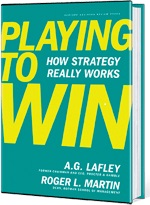Find and share the latest thinking and resources on leadership topics. From quick thought-provoking posts to recommended articles and books, you’ll find a treasure-trove of curated content.
Managing Up: Stepping Into Your Boss’s Shoes
One of the most potentially challenging communication situations is the one between manager and employee. Different perspectives can emerge due to hierarchy, accountability, and unclear expectations. Sometimes the key to finding common ground between you and your manager is to change your perspective – to step in your boss’s shoes.
Imagine for a moment what it would be like if…
- you had to always keep the whole team in mind?
- you needed to think about the budget more carefully?
- you had to think about managing your boss’s boss?
- you were to remain sensitive to larger internal and external factors impacting decisions?
- you were the person who takes the hit if things go wrong?
What would you do differently in how you manage up with this new point of view?
Now take off your boss’s shoes and step back into your own. How can you be a more effective partner with your boss? Effective communication starts with a step back and then strides forward. The better you can relate to the conditions you and your boss face, the more successful the outcomes will be for your boss, for you, and for the team.
About the author:
Patrick Reilly, M.S., is the President Resources In Action, Inc. and an Executive Leadership Coach for Mariposa Leadership, Inc. For more interesting articles and blogs by Patrick, visit www.resourcesinaction.com.
MORE




